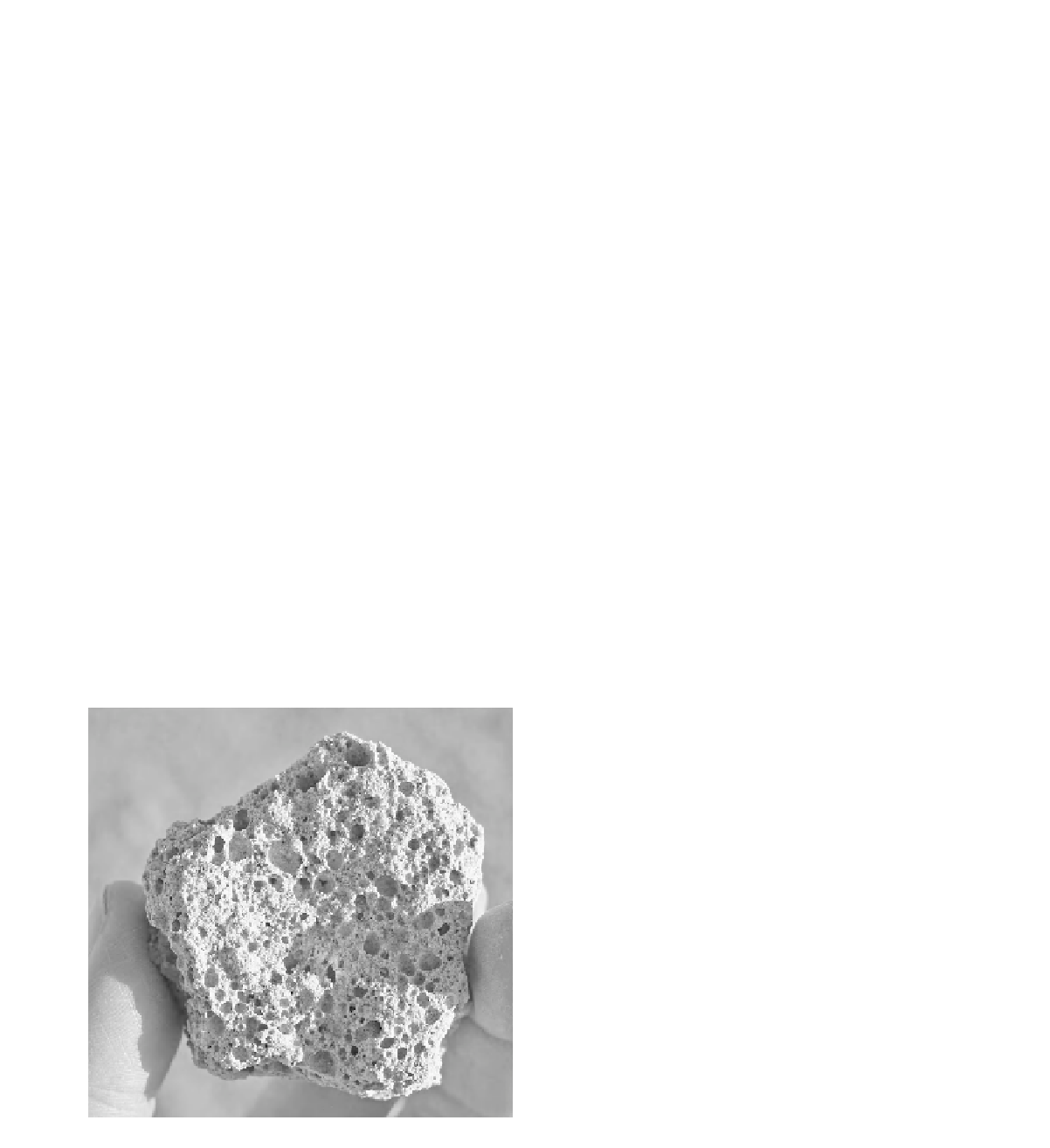Geoscience Reference
In-Depth Information
(Wood, Graham and Wells, 2005). Between major peri-
ods of silt deposition, a lower aeolian flux rate permits
development of soils in the deposits. Soil formation pro-
ceeds beneath the surface concurrently with pavement
development. Over time, soil depth increases, horizons
become more differentiated and the B-horizon becomes
more argillic and red in colour. CaCO
3
accumulates in the
soil and soluble salts are precipitated.
Pavement soils are defined by several horizons. At
the surface is the gravelly desert pavement and inter-
gravel crust (Amit and Gerson, 1986). Beneath this is
an ochric A-horizon with vesicular pores (Av-horizon,
where v stands for vesicular), which is the key pedogenic
feature associated with desert pavement (Figure 9.8). The
vesicles, spherical voids that are generally a few mm in
diameter, produce a honeycomb-like appearance in the
soil (Figure 9.10). The Av-horizon does not conform to
established criteria for horizon nomenclature and further-
more exhibits complex properties, with some similarities
to both B- and C-horizons (Anderson, Wells and Graham,
2002). However, the designation of vesicular horizons as
Av in pavement studies is now a widespread convention.
The Av-horizon contains significant quantities of silt,
clay and other constituents such as calcium carbonate,
gypsum or other soluble salts (McFadden
et al.
, 1998). It
differs from the parent material in both mineralogy and
grain size and is the horizon most similar in composition
to atmospheric dust (Reheis
et al.
, 1995). The discon-
nected spherical or ovoid vesicles, with walls strength-
ened by calcium carbonate cementation, probably result
from soil air that cannot escape freely after a rainfall event
(Evenari, Yaalon and Gutterman, 1974; McFadden
et al.
,
1998). The expansion of air may be favoured by heating of
the soil after wetting events, and the zone of most recent
vesicle formation is in the uppermost few millimetres or
centimetres of the Av-horizon (McFadden
et al.
, 1998).
The vesicles are better developed beneath the clasts than
in the interclast spaces, because the stones act to trap the
heated and expanding air (Evenari, Yaalon and Gutter-
man, 1974; Ugolini
et al.
, 2008). Valentin (1994) found
that vesicular soils are also better developed beneath em-
bedded clasts than free-floating stones, but Brown and
Dunkerley (1996) found a weakly negative relationship
between the abundance of vesicles and the average depth
to which a stone is embedded. The occurrence of a sub-
pavement vesicular soil is widely reported in deserts, in-
cluding Israel (Evenari, Yaalon and Gutterman, 1974),
Niger (Valentin, 1994), Egypt (Adelsberger and Smith,
2009), Australia and the southwestern United States. As
the Av-horizon thickens, older vesicles are buried and
the increasing weight of overlying material deforms and
flattens them, potentially favouring the development of
a fine, platy structure that lacks vesicularity (McFadden
et al.
, 1998).
In some, but not all, regions, vesicular horizons show
a pronounced columnar structure, caused by the alternat-
ing shrinking and swelling of clays in the increasingly
clay-enriched Av-horizon, and a platy soil structure (Mc-
Fadden, Wells and Jercinovich, 1987; Anderson, Wells
and Graham, 2002; Young
et al.
, 2004). Fine sand, silt
and solutes are transported below the surface through the
polygonal cracks by rain splash, surface wash and translo-
cation, and the walls of the peds are coated with loose
silt. The dust may be transported horizontally along platy
boundaries to ped interiors (Figure 9.8) (Anderson, Wells
and Graham, 2002).
Soil pH of the Av-horizon commonly ranges from 7.0
to 8.9. Electroconductivity (EC) values are usually low,
indicating the leaching of salts. However, seasonal efflo-
rescence may occur as a result of capillary updraw (Mc-
Fadden
et al.
, 1998). The soil carbonate content ranges
considerably - from
0.1 % to 30 %. High values are
associated with soils developed in limestone-rich parent
materials. Carbonate may be disseminated within the ped
interior or may occur as segregated coatings on the bot-
tom of peds. The interior of the ped may be more strongly
effervescent than its top or sides (McFadden
et al.
, 1998).
For example, ped interiors at the Cima Volcanic Field con-
tain about 12 % CaCO
3
, whereas the sediments adhering
<
Figure 9.10
The occurrence of a subpavement vesicular hori-
zon (Av-horizon) is reported from many deserts. The spherical

